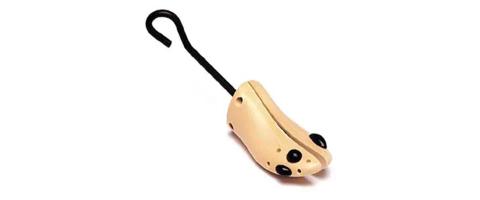
Comfort Guide: How to Stop Shoes Rubbing
30 December 2024
The dream pair of shoes should be stylish, affordable, and comfortable. But sometimes they just won’t play ball, and with rubbing being one of the most immediately obvious barriers to comfort, it’s important to nip it in the bud as soon as possible.
If your favourite pair of shoes is rubbing, fear not. There are plenty of ways to tackle the issue and, hopefully, stop the rubbing once and for all. So, whether it’s a new pair that needs breaking in or a recurring issue with an existing pair, this article is for you.
Here's what we'll cover:
- How to tell if your shoes are rubbing
- 8 tried and tested methods to stop your shoes from rubbing
How to Tell If Your Shoes Are Rubbing
Sometimes rubbing is a very obvious sensation that you feel as soon as you put your shoes on, whether it be a pinch at your toes or a rub at your heel. At other times though, it’s a more subtle discomfort that builds gradually, sometimes only really noticeable when you find a blister or sore spot at the end of the day.
By keeping an eye out for tell tale signs that your shoes are rubbing, you can address the problem before the discomfort gets too severe. Here are a few things to look for:
- Redness or irritation in specific areas of your feet after wearing the shoes, particularly around your toes, heel, or sides of your feet
- Blisters forming on your feet, in the same areas mentioned above
- Soreness or discomfort even after you’ve worn the shoes for short periods
- Visible wear inside the shoes
What Causes Rubbing?
Rubbing is often caused by friction between your skin and the shoe material, particularly in high-pressure areas like the heels, toes, or sides of the feet. Common reasons for rubbing include shoes that are too tight, too loose, or made from stiff materials like leather or suede.
As you continue to wear the shoe, the rubbing continues to occur. Over time this abrasion damages the skin, creating tenderness, blistering, or even broken skin.
Without doing something to counteract the rubbing, it can quickly cause more than just physical discomfort: it can dissuade people from wearing their favourite styles, limiting their wardrobe choices and lowering their confidence. To avoid this happening to you and your favourite shoes, it's important to take preventative steps as soon as you notice rubbing.
8 Tried and Tested Methods to Stop Your Shoes from Rubbing
If your shoes are rubbing, don’t worry. There are plenty of ways to make them more comfortable. Work your way through this list and the rubbing and discomfort will become things of the past.
Make Sure You’ve Got the Right Size Footwear
One of the most common reasons for rubbing shoes is a poor fit. Shoes that are too small can pinch and create pressure points, while shoes that are too large can slip and cause friction with each step. Ensuring the right size is essential for comfort and there are simple steps you can follow to measure your feet accurately and evaluate fit to prevent rubbing once and for all.
Wear the Right Socks
Socks act as a barrier between your feet and your shoes, reducing friction and preventing blisters. By choosing socks with padding you can enjoy extra cushioning in high-friction areas, protecting your feet from rubbing and associated symptoms. Thin or no-show socks can work well with more formal shoes, while thicker socks are great for boots and casual styles.
Use Shoe Stretchers
If your shoes are tight and it's causing rubbing, stretching them can make a big difference. Shoe stretchers or stretch sprays can help to loosen the material, creating more room and reducing the pressure on your feet. This method is great for leather or suede shoes that may feel stiff initially.
Break Them In Gradually
New shoes need time to mould to your feet, and can be uncomfortable for a while after buying. Breaking into your new shoes like wearing them around the house with thick socks, you can gently stretch the material to prepare them for general wear. Over time, this reduces stiffness and minimises rubbing.
Use Protective Products
Barrier creams or anti-friction balms can reduce irritation by creating a slick surface between your skin and the shoe. These products are especially useful for days when you’re on your feet for a long time.
Buy a New Pair
Sometimes even the most diligent efforts can't stop a pair of shoes from rubbing. If you've reached the end of the list and you're still finding it sore to wear your favourite pair, it might be time to part ways! Thankfully our new arrivals has an incredible range of styles to suit any taste. From elegant heels to versatile boots, these options are crafted to keep you feeling great all day long.
Say Hello to Comfort
If your shoes are rubbing, it doesn’t necessarily mean you have to suffer discomfort or give up on your favourite styles. As we've shown in this guide, addressing the cause of the rubbing can often put the issue to bed and let you enjoy comfortable, well-fitting footwear every day. In most cases one or two of the tips in our list will be enough to make a meaningful reduction in the amount of rubbing you’re experiencing, hopefully leading to minimised discomfort and avoidance of more serious aftereffects.


